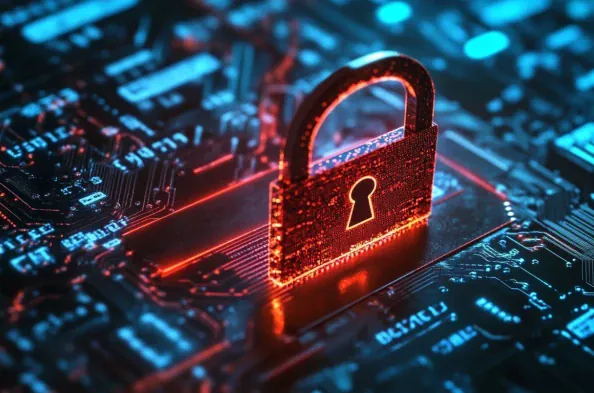In our increasingly digital world, millions of tech devices are discarded every year due to age, obsolescence, or malfunction, raising significant security concerns about the data left on these devices. Disposing of old tech devices without proper handling can leave sensitive data vulnerable to unauthorized access, leading to potential identity theft, financial fraud, and data breaches. This article delves into how to securely dispose of old tech devices, ensuring sensitive information remains protected.
1. Recognizing Devices with Sensitive Information
With the proliferation of technology, an array of devices houses personal, financial, and business data that could be exploited if improperly disposed of. Awareness of these devices is crucial in safeguarding data.
1.1. Computers, Laptops, and External Storage Devices
These devices store a plethora of personal and work-related data, including documents, photos, videos, browser history, saved passwords, and emails. External hard drives, commonly used for backups, can hold large amounts of sensitive information. Improper disposal of these devices can lead to significant security risks and data breaches.
1.2. Mobile Phones, Tablets, and Smartwatches
Modern mobile devices are treasure troves of sensitive data, containing contact information, emails, chat logs, banking app data, location history, and photos. Additionally, these devices store authentication data, including saved passwords and biometric information like fingerprints or facial recognition. Smartwatches, often synced with smartphones, hold similar data, making their secure disposal equally important.
1.3. Printers, Routers, and Smart Home Gadgets
Many users overlook that printers, routers, and smart home devices can store private data. Printers with built-in memory can retain copies of printed or scanned documents. Routers store network activity information, including IP addresses and Wi-Fi passwords. Smart home devices like Alexa, Google Home, and smart TVs retain voice recordings, usage patterns, personal preferences, and streaming service credentials, posing potential security risks if not properly disposed of.
1.4. Portable Storage Like USB Drives, SD Cards, and Optical Discs
Small and easily overlooked, portable storage devices like USB drives and SD cards often contain a mix of personal and work-related data. Similarly, old CDs and DVDs can store archived files, financial records, emails, and photos. Despite their age, data on these devices can still be recovered and misused, necessitating careful disposal.
2. Safely Erasing Data Before Disposal
Simply deleting files or formatting a device is insufficient, as data can still be retrievable using specialized recovery tools. Securely wiping data before disposal is essential to protect sensitive information.
2.1. For Desktops and Laptops
Windows users should use the “Reset this PC” feature, selecting “Remove all files and clean the drive” to ensure complete data erasure. macOS users can utilize “Erase Disk” in Disk Utility for similar results. Additional tools like DBAN (Darik’s Boot and Nuke) are excellent for securely erasing traditional hard drives (HDDs) by overwriting all stored data but don’t support SSDs. BleachBit is another tool for Windows and Linux users that removes unnecessary files and permanently deletes sensitive data, allowing specific file erasure without wiping the entire system.
2.2. For Smartphones and Tablets
Factory resets are commonly used to wipe data from smartphones before disposal. However, they don’t entirely delete everything; data can still be recoverable. Additional measures like enabling encryption ensure any data remaining after a factory reset is unreadable without the decryption key. iPhones and iPads have built-in encryption activated with a passcode, making a factory reset erase the encryption key and permanently inaccessible. Older Android devices may need manual encryption in settings before a factory reset. Ensure linked cloud accounts are removed, and tracking features like Find My iPhone or Google’s Find My Device are disabled before disposal.
2.3. For External Storage
A standard format doesn’t guarantee complete data removal on external storage devices like USB flash drives and SSDs. A secure erasure method overwrites the device’s sectors with random data or zeros, making original data irretrievable. For SSDs, using the built-in Secure Erase command is recommended. Tools like Eraser can overwrite files multiple times, ensuring they’re beyond recovery, and VeraCrypt can encrypt the entire drive before deleting encryption keys for permanently inaccessible data.
3. Physically Destroying Old Tech for Maximum Safety
While software-based data erasure can be quite effective, it doesn’t always ensure complete data removal, particularly if the storage device has wear-leveling features or is damaged. Physical destruction guarantees data safekeeping when confidentiality is paramount.
3.1. Methods for Hard Drives and SSDs
Shredding devices with industrial shredders cuts storage devices into small fragments, rendering data recovery impossible for both HDDs and SSDs. Degaussing uses powerful magnetic fields to neutralize HDD data but isn’t effective on SSDs. Drilling or crushing storage devices damages internal components, complicating data retrieval, but may not be thorough for SSDs with multiple memory chips needing destruction.
3.2. Secure Disposal of SIM Cards, USB Drives, and CDs/DVDs
Simply discarding these items without proper handling can pose serious threats to your personal information. This article explores practical steps to safely eliminate old tech devices, ensuring that your sensitive data remains protected. Methods include completely erasing all data, using special software designed for data destruction, and physically destroying the hard drives when necessary. By following these steps, you can help prevent unauthorized access and safeguard against potential security threats posed by discarded tech devices.






